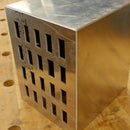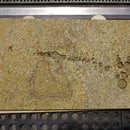Introduction: Mapping Imaginary Drinking Hydrants
This is a mapping project, which geolocates the San Francisco's Emergency Drinking Hydrants — a series of fire hydrants that were set up at one point to provide emergency drinking water to San Francisco in case of a city-wide disaster. I later renamed this project: The Imaginary Drinking Hydrants. You'll soon see why.
This Instructable is one of many short investigations, all part of a larger project, called Water Works, which is a data-visualization and mapping of the San Francisco water infrastructure: the pipes, hydrants and treatment plants that comprise the circulatory network for this city.
This Instructable will cover an exercise of investigative mapping and what happens when you find yourself in an information pickle with the city and the press.
The Water Works project is part of a larger Creative Code Fellowship, supported by Gray Area, Stamen Design and Autodesk.
Step 1: Find the Data
For the last few months, as part of the Water Works project, I've slowly been gathering water-related data on the web and through city agencies. One evening, while researching the Underground San Francisco Cisterns, I found this gem on the SFPUC (the city agency the manages San Francisco's water) website.
It is a map of 67 of emergency drinking hydrants for public use in a city-wide disaster.
Whoa.
How interesting...
Step 2: What Is the Blue Drop Hydrant Program
I dug deeper.
I scouted out the intersections in person and took some photos of the Emergency Drinking Hydrants. They have blue drops painted on them.
You can even catch them on Street View.
I found online news articles from several years ago, which discussed this program, introduced in 2006, also known as the Blue Drop Hydrant program.
Step 3: Mapping on a Website
I set up a page on my Water Works website, which maps the locations of the hydrants in San Francisco.
The general steps are:
(1) do the data conversion to a GeoJSON format
(2) map in Javascript using Leaflet and Stamen tiles
I used identical mapping techniques as my Cisterns Mapping project, which is detailed in this Instructable. So, I'll skip the steps here. For those who want to get their data geek on, do check it out.
Step 4: Press Coverage, Then Get Yourself in Trouble
Uh-oh, I wasn't planning on this part.
I put my map on my Twitter feed. It generated a lot of excitement and was retweeted by many sources.
The SFist — a local San Francisco news blog ended up covering it. I was excited. I thought I was doing a good public service.
However, there was a backlash...of sorts. It turns out that the program was discontinued by the SFPUC. The organization did some quick publicity-control on their Facebook page and also contacted the SFist.
The writer of the article then issued a statement that this program was discontinued and a press statement by the SFPUC.
They also had this quote, which was a bit of a jab at me.
"It had sounded like designer Scott Kildall, who had been mapping the the hydrants, had done a fair amount of research, but apparently not."
What? I beg your pardon. They called me a designer...
In my defense, I re-researched the emergency drinking hydrants. Nowhere did it say that the program was discontinued. So, apparently the SFPUC quietly shuffled it out.
Step 5: But Then a Good Public Response
My map birthed a larger discussion. The SFPUC had this response, also printed later on SFist.
The key quote by Emergency Planning Director Mary Ellen Carroll is:
"When it comes to sheltering after a emergency, we don't tell people ahead of time, 'This is where you'll need to go to find shelter after an earthquake' because there's no way to know if that shelter will still be there.
Makes sense that central gathering locations could be a bad idea. Imagine a gas leak or something akin. And so a water distribution plan would have to be improvised.
So, my mapping work had a good effect. Yes!!
The was still a bit of backpedaling.
Carroll stated: "When I got here, someone showed me some information about the blue-dot fire hydrants, and the map, and I realized that there was really only a map, and there wasn't an operational plan behind it"
We know from various news articles and by my own photographs that there was not only a map, but physical blue drops painted on the hydrants in addition to a large publicity campaign. The program supposedly costs 1 million dollars, so that would have been one expensive map.
They SFPUC never pulled the old maps from their website nor did they inform the public that the blue drop hydrants were discontinued.
I blame it on general human miscommunication. And after visiting the SFPUC offices last week for a different portion of my Water Works project, I'm entirely convinced that this is a progressive organization with smart people. They're doing solid work.
And I got called an "amateur cartographer" by the SFist! It's certainly better than being called a "designer". I think I'll put this on my business card as alternative title to "Artist".
Step 6: Rebrand As Imaginary Drinking Hydrants
When faced with adverse circumstances, at least in the area of mapping and art, you must be flexible. There's always a solution. This one almost rhymes with Emergency — Imaginary.
Instead of hydrants for emergency drinking water, I ask the question: what would a city be like where we could get tap water from these hydrants at any time? What if the water were recycled water?
They could have a faucet handle on them, so you could fill up your bottle when you get thirsty. More importantly, these hydrants could be a public service.
It's probably impractical in the short term, but I love the idea of reusing the water lines for drinking lines — and having free drinking water in the public commons.
Step 7: Done!
This was a short Instructable and part of my Water Works project: a larger investigation into the San Francisco water infrastructure. I encourage you to check out the project here.
I hope this was helpful!
Scott Kildall
For more on the Water Works project or other art projects, you can find me here: @kildall or www.kildall.com/blog











